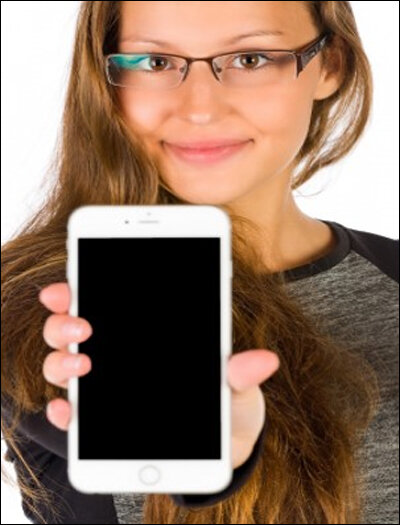Over 89% of participants said their screen time drastically increased post-pandemic, along with symptoms of digital eye strain. Yes, that’s a real thing”, says Nigel.
The COVID-19 pandemic and ensuing lockdowns worldwide led to many people turning to their smartphones as their only connection to the outside world. Meetings on Zoom, shopping on Amazon, food from Swiggy, and the list goes on.
In a recent survey, it is suggested that over 89% of participants said their screen time had drastically increased post-pandemic, along with symptoms of digital eye strain. Yes, that’s a real thing, also known by other names like computer vision syndrome, mobile vision syndrome, and smartphone vision syndrome. What they all have in common is a digital screen very close to your face.

Screen brightness, poor lighting, prolonged use, and poor posture, all add to this complex eye and vision-related problems which are becoming increasingly common.
If you’ve ever felt your eyes go dry and blurry after playing video games for too long, that’s a symptom of digital eye strain. Other symptoms include eye fatigue, double vision (aka Diplopia), headaches, and neck and back aches. There are also more serious effects being reported more recently but we’ll get to that in a bit.
The bottom line here is that human beings haven’t physically evolved for a very long time (about 200,000 years) but the technology around us is evolving at an exponential pace. If you had to describe a digital screen to a person 150 years ago you would have to call it magic for it to make sense. Today, however, that magic has become commonplace and is overloading our 200,000-year-old senses.
Smartphone vision syndrome

Now about the more serious effects, a series of tweets by an Indian doctor in Hyderabad has recently been in the news. Dr. Sudhir Kumar, a neurologist at Apollo hospital, Hyderabad, tweeted that his 30-year-old patient, Manju, had severe “disabling vision symptoms” for a year and a half including floaters, bright flashes of light, dark zig-zag lines, and at times inability to focus on objects or even see clearly. During this year-and-a-half period, there were even times when she would temporarily go blind and not be able to see anything at all for a few seconds at a time. When she consulted an ophthalmologist, they couldn’t find anything wrong with her eyes and referred her to a neurologist, Dr. Kumar.
On further investigation, it was established that the problems only began after Manju started working from home in order to take care of her differently abled child which had in turn led to a dramatic increase in screen time. This included browsing the phone for several hours a day and more than two hours at night with the lights off.
What’s notable in this story is that a month of limited screen time apparently cured all the symptoms mentioned above including floaters which many believe is incurable. That’s right, Manju decided to only look at her phone when absolutely necessary and her eyesight problems vanished in a month.
What you can do about it

Not everyone is a believer, however, like Dr. Sanjay Dhawan, Senior Director & HOD of Ophthalmology at Max Multi Specialty Centre, who was quoted stating “the symptoms of floaters, flashes, and seeing zig-zag lines are NOT related to smartphone usage.” That’s understandable as we’ve only had smartphones for a very short while. Additionally, it is fairly recent that the screens have become high definition and the content has become addictively engaging.
What we know for a fact is that human beings have never had this particular problem before in the history of our existence and even the television was invented less than 100 years ago. As the saying goes, “new problems require new solutions,” and it’s not inconceivable that a break from screens could improve your eyesight.
The good news here is that if our screens are indeed causing us to go blind, there are a number of “best practices” that can be followed to minimize the damage. Dr. Kumar talks about the 20-20-20 rule that states for every 20 minutes of staring at a screen, you look away for 20 seconds, at something that is 20 feet away. Additionally, don’t use your phone at least 2 hours before you sleep, adjust the brightness to be softer on your eyes, use dark mode as much as possible, and use a larger font for text size when possible.
It also goes without saying that you shouldn’t be addicted to screens whether you’re scrolling reels on Instagram, playing a video game, binging entire seasons on Netflix or even just working, too much of a good thing is never a good thing.
In conclusion, screens are playing a bigger and more important role in our lives to a point where most of us wouldn’t be able to function without them. Add to that the addictive nature of the content and you begin to understand why some people are calling it a digital drug.
In case you missed:
- Could This Tiny Device Really save Us from Our Screens?
- The next iPhone could be foldable, with a self-healing screen!
- Neuralink Blindsight and Gennaris Bionic eye, the future of ophthalmology?
- Could the Future of Communication Be Holographic?
- Researchers develop solar cells to charge phones through their screens
- These AI powered devices add smells to virtual worlds
- Introducing Nvidia’s L4 GPU profiles in the cloud
- This Device can Actually Record Your Dreams Like a Movie!
- Shape-shifting 3D displays could let you hold hands over the phone
- AI-powered smart devices for the hearing, vision, and speech-impaired









